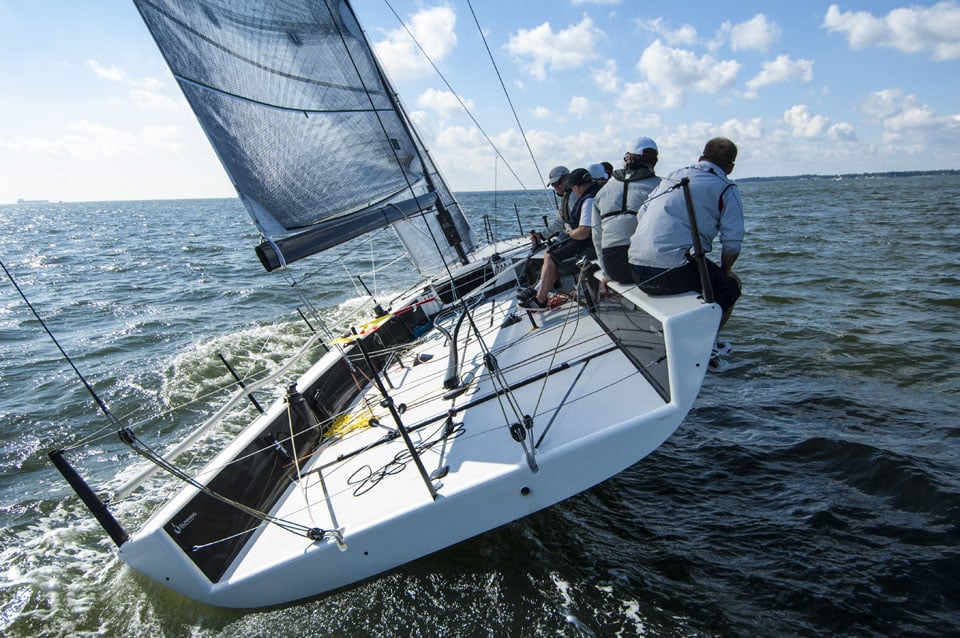
MC38 One Design
Purpose: inshore racing
Recommended race crew: 7
Best attributes: sail-handling systems, straight-line speed, build quality
Price: $248,000 (base)
www.mcconaghyboats.com
The genesis of the MC38 One-Design, said its designer Harry Dunning, was to provide a pure raceboat for owners coming from the Farr 40 or Melges 32 classes. The design brief was therefore simple: leave out all the unnecessary interior extras (head, galley, berths, etc.) and put in all the latest go-fast technology. The result is one impressive, low-slung, one-design machine.
To build the boat, Dunning partnered with McConaghy Boats, of Australia. He then enlisted the help of friends and colleagues from his America’s Cup Rolodex to ensure the engineering was done right–and light–and that its systems were properly integrated into the boat. The hull, as we’d expect of a 7,040-pound 38-footer, is a carbon/E-glass, and CoreCell composite, and the deck is resin-infused Vinylester. The custom-quality build McConaghy is known for was visible in the clear-coated interior. “It’s cleanly built, with nice finish work, inside and on deck,” said Rich.
To minimize the number of crew required to sail the boat, and thereby reduce regatta costs, said Dunning, the design and engineering team focused on the boat’s stability and its sail-handling systems in order to get the ideal crew weight down to around 1,300 pounds, or seven people. The result is a boat that is light on its lines, quick to accelerate, and agile through the turns. “It’s really stable and pretty darn fast for a 38-footer,” said Stewart after our test sail in single-digit winds. “It’s easy to get to 8 knots, and the wake off the back of the boat was very clean.”
With most sail controls and the spinnaker sheets led under the deck, exiting from the cockpit walls, there were no issues of cockpit clutter or foot cleats, and good leads resulted in snag-free maneuvers (except when the lazy spinnaker sheet went under the boat, requiring it to be temporarily led externally). There are quite a few clever ideas borrowed from the grand-prix realm, including a pneumatic rubber seal on the foredeck hatch, a spinnaker string-takedown system, PBO rigging, and beautiful carbon fittings scattered around the boat. It all looks simple, said Dunning, but it took a lot of time to get right. In terms of regatta road travel, the boat has a lifting 9-foot carbon fin, which can also be removed for shipping.
The boat is powerful and high-tech, the judges cautioned, and will require a few experienced crewmembers to get it around the racecourse efficiently (approximate IRC rating is 1.25), especially in stronger winds. “Downwind, this boat will really rip,” said Allen, “and when it’s blowing 25, things will happen fast–you’re going to need three or four guys that know what they’re doing.”
For more images of the MC38 One Design, click here.
For more on McConaghy Boats, click here.
To see the rest of 2013’s winners, click here.









